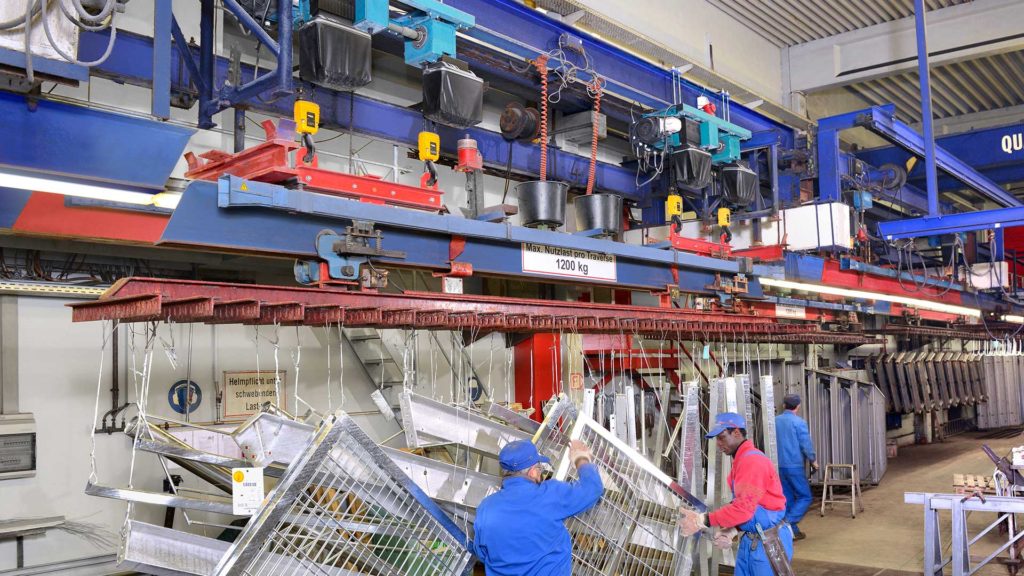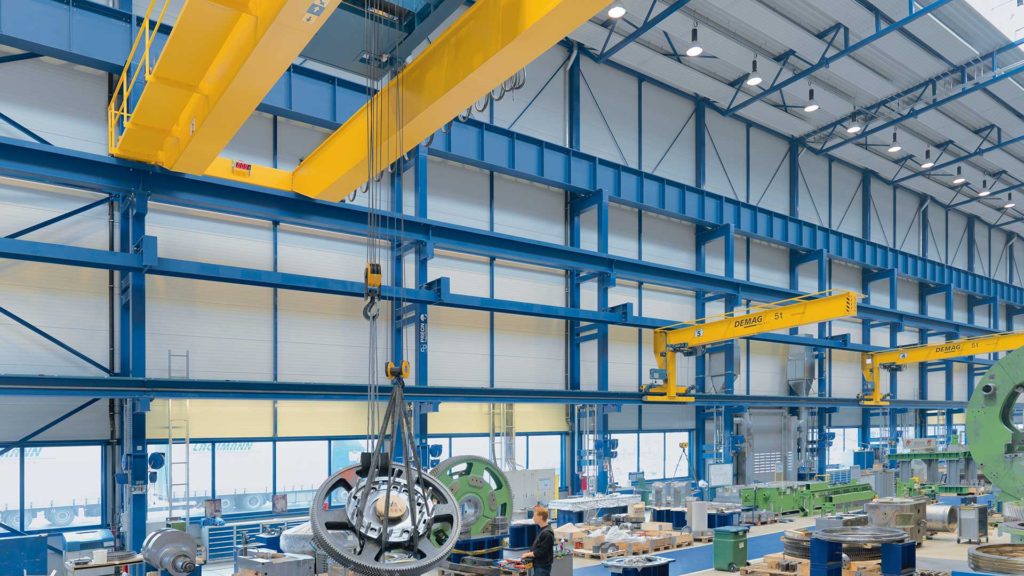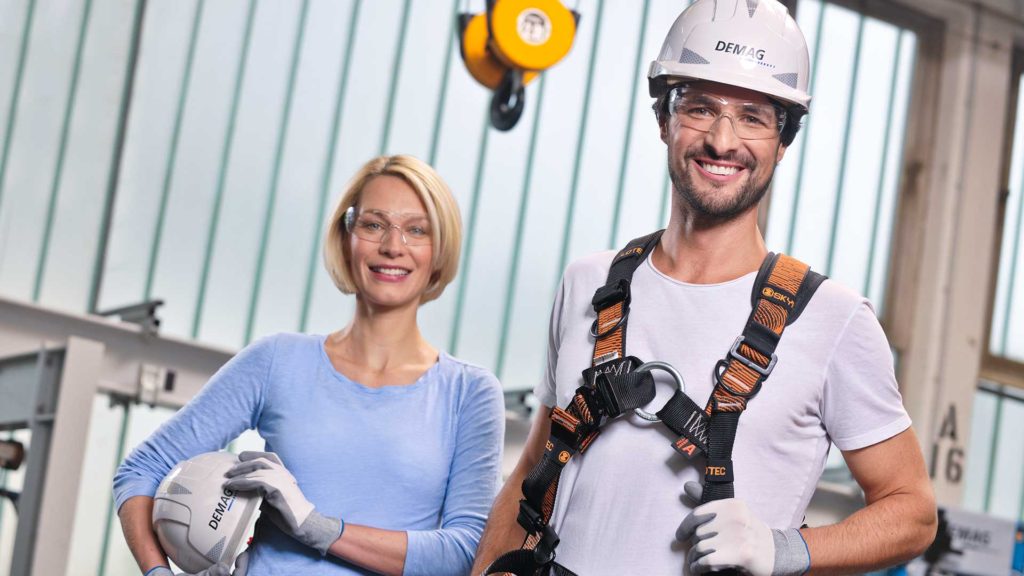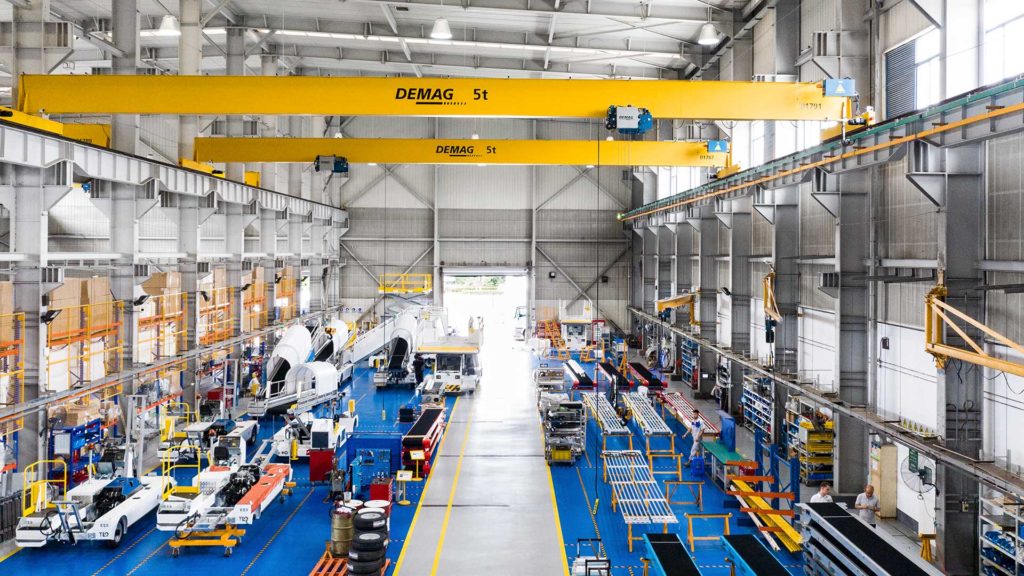A question we get a lot is “How do I know when to replace a crane?” or “How long will my crane last?” One of these questions is easier to answer than the other, but there are many factors that go into determining the longevity of lifting equipment. Here we are discussing some of those factors and some other considerations to think about as you spec out the crane you need for your facility, or if you think you’re close to replacing your existing crane.
The “end of life” of a crane is based on safety and economics. Obviously, if a crane and its components cannot be serviced to operate safely, the crane needs to be replaced. The economic end of life of a crane is when the cost to fix or maintain it outweighs the costs and benefits of replacement. The economic life of a crane varies with every business and the right time for replacement is different for everyone. Understanding your business and operations is key to understanding when replacement due to the economic life is necessary.
Factors that Affect the Lifespan of an Overhead Travelling Crane

Knowing how much the crane will run over a given day or even year is important when choosing lifting equipment.
Total Operating Time
The more something is used, the more wear and tear it gets. It’s the same thing that happens to your car. The more miles you drive, the more wear and tear the components experience. You’ve installed an overhead crane to help you do a job. The crane might be running periodically or it could be running over multiple shifts for hours each day. Defining what actions and for how long those actions will be done will factor into the total operating time. As you get a quote, you and your crane dealer or builder may look at this from the perspective of total running time per year.

Extreme environments, like galvanizing plants, require components that can withstand additional moisture and acidity.
Environment
You wouldn’t wear flip flops to shovel a foot of snow in your driveway, right? Though an extreme comparison, you want the right equipment for operating in extreme and demanding environments. Not every crane component will be able to effectively operate in a very hot, very humid environment or other type of extreme environment. Understanding the environment where a crane is operating and the challenges within that space will help you choose the right product to optimize the life span and effectiveness of your processes.

Assuring your lifting equipment is rated to the job is critical.
Choosing the Right Equipment for the Job
Working with a knowledgeable dealer to get the right equipment is key when purchasing a new or replacing an existing overhead travelling crane. Knowing what and how you will be lifting a load will help optimize the life of a crane. Organizations like the Crane Manufacturers Association of America (CMAA), the European Federation of Material Handling (FEM) and Hoist Manufacturers Institute (HMI) all classify lifting equipment duty ratings for safe lifting and durability. In the US, the CMAA defines duty ratings of cranes from A – E. The CMAA rating A is lowest, very light duty, while E is the highest, severe duty. Generally, a crane with a higher duty rating lifting a lighter load will last longer simply because the crane and components receive less wear and tear. Though this is the case, the ultimate answer is not to get equipment that is over-rated for the job. Using the ratings provided by any of these organizations will help you and your knowledgeable dealer find the right solution for your operations. When you have the right equipment for the job, you have found your sweet spot balancing the investment cost and the ongoing maintenance costs for your business.

Trained technicians are key to making sure your overhead crane is maintained properly.
Proper and Regular Maintenance
Like any mechanical machine, regular maintenance will assure your equipment continues to operate effectively. Overhead cranes should be inspected regularly and maintained on the proper schedule not just for optimal life, but for safety of the crane operator and people in the area around the crane. Maintaining wear parts in lifting equipment helps keep bigger issues at bay. Just like your car or truck, maintenance is key; you want to change out your oil filter regularly so particles don’t get into the engine to cause issues in the cylinders.
Manufacturers of lifting equipment have extensive knowledge of their products. This knowledge comes from the design and development and knowing the engineering methods and materials used. Because of this, they can give direction on what product will work best for your application, especially if the crane is operating in an extreme environment. With the testing that has been done during the product development phase and the vast installations completed across the world, this knowledge, paired with your knowledgeable dealer, is a great resource to have as you determine what lifting equipment will best fit your needs.

Manufacturers have expert knowledge of their products and can be a great resource to you as you plan your crane projects.
Many factors go into determining the life span on a crane, including some not listed here. When you are in the process of purchasing a new crane or replacing an existing crane, consulting your knowledgeable dealer is essential to getting the right equipment for the job. They will help you look at the tasks the crane will perform, the environment the crane is operating in and your future needs to optimize your project. Manufacturers of lifting products have in-depth knowledge of their products so they, and their representatives, can be a great resource as you go through this process. Whether you are replacing an old overhead crane or starting a new project from scratch, make sure you know what factors to consider so you find the best solution for your needs today and in the future.
Do you know what information you need to get a crane quote? See our post here!
